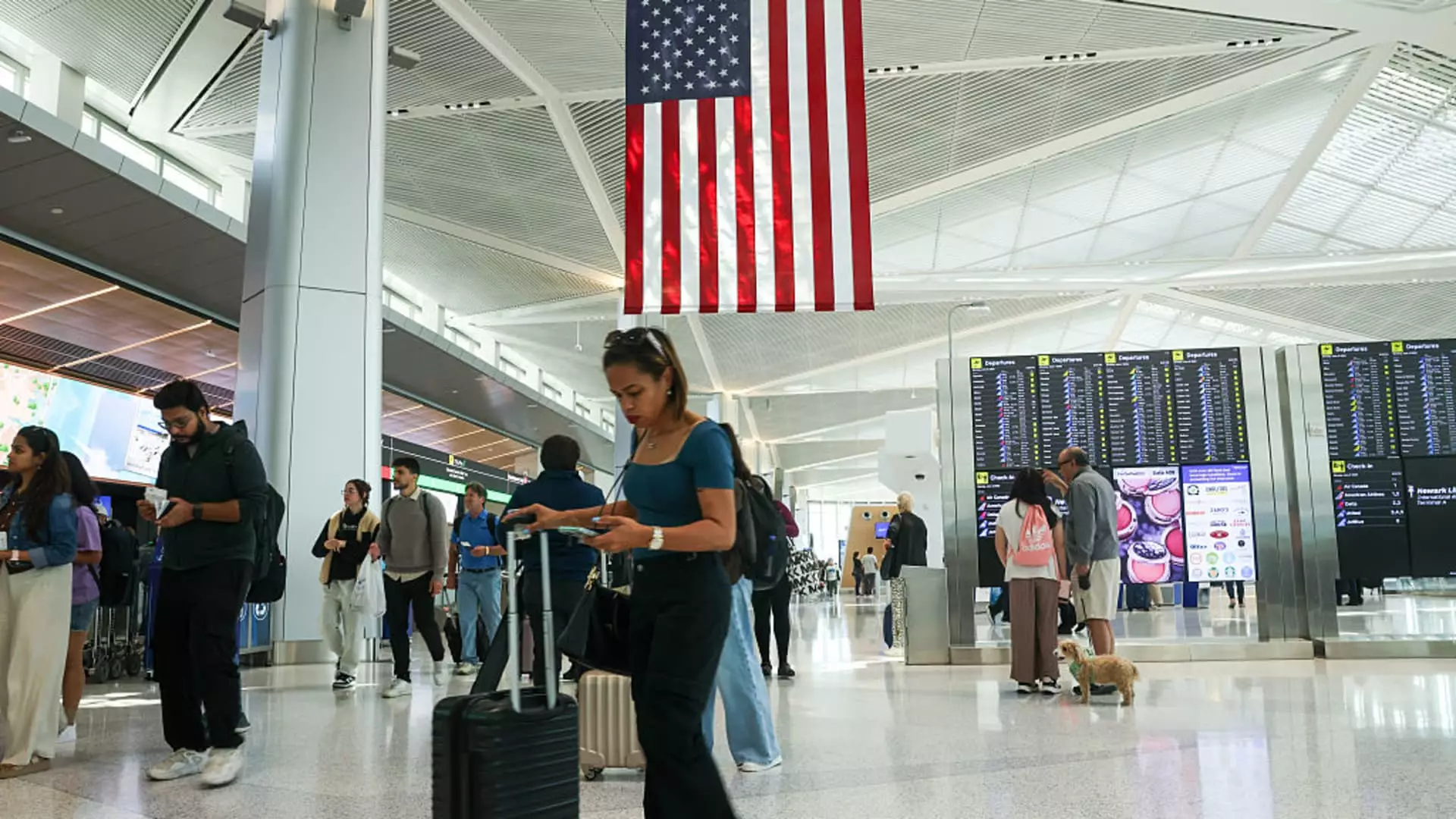Despite the summer travel surge anticipated each year, the current state of the airline industry exposes a stark reality: a fragile and increasingly unstable market. Airlines collectively project a modest increase in travelers over the July 4 holiday, yet this fleeting moment of buoyancy masks deeper issues plaguing the sector. The prevailing narrative of a “summer on sale,” with fares dropping to their lowest levels since 2021, is more a sign of desperation than robust demand. This artificially depressed pricing reveals an industry struggling to find its footing amid uncertainty—an indication of underlying weaknesses rather than genuine growth.
The drop in domestic round-trip fares to an average of $265 signifies a contraction in consumer confidence. Lower prices are not evidence of a vibrant market but rather a defensive measure by airlines desperately attempting to attract travelers in a stagnant environment. The decline of over 7% in airfare costs compared to last year, and the fact that airlines have retracted forecasts for 2025, point to a grim outlook: demand remains sluggish, and the industry’s future is shrouded in ambiguity. These signals should serve as a wake-up call; the supposed rebound is superficial at best, hiding an industry grappling with structural challenges that could threaten its viability in the longer term.
Structural Flaws and Political Headwinds
The airlines’ cautious silence on their outlook for 2025—particularly after pulling their forecasts—reflects an industry paralyzed by uncertainty. The tumultuous political landscape, consisting of tariffs, trade tensions, and ever-changing immigration policies, continues to undercut long-term growth prospects. While many consumers are eager for travel, the broader macroeconomic climate dampens their willingness to spend. Jobs are stable for now, but economic headwinds loom, and airlines are well aware of this volatile landscape.
Further complicating matters are the geopolitical and policy challenges that no corporate profit forecast can fully insulate against. Political missteps and tariff escalations threaten to curtail the international travel rebound, a vital segment for U.S. airlines. The hope that increased overseas visitors might provide a cushion for airline revenue proves fragile when the political playing field is so unpredictable. This reality underscores the vulnerability of the industry to external shocks—market fundamentals are weak, and the political environment makes a true recovery unlikely unless significant policy stabilizations occur.
The Toll of Economic Uncertainty on Demand
In recent months, the data has been pointedly discouraging. Air travel spending has declined significantly—nearly 12% in June—highlighting a shift in consumer behavior. Even as the number of travelers at TSA checkpoints increases, indicating some level of pent-up demand, the story is far from triumphant. The demand is tepid, and airlines are responding by cutting unprofitable flights, particularly on off-peak days. Such capacity cuts exemplify an industry trying to weather the storm by reducing supply rather than invigorating demand.
The international sector paints a similarly grim picture. While U.S. carriers have enjoyed a partial recovery with modest increases in international travelers, fares continue to fall, signaling a buyer’s market that hurts profitability. Average fares to Europe have returned to pre-pandemic levels, and Asian routes have seen similar declines. These reductions are indicative not of a healthy rebound but of a fragmented, pressure-cooked market where airlines must compete fiercely on price just to stay afloat.
The False Promise of Cheap Flights
Lower prices have long been touted as a sign of recovery, but in reality, they symbolize something far more troubling. As airlines slash fares to fill seats, their profit margins evaporate, straining financial stability and risking long-term viability. The short-term benefit of attracting additional travelers is offset by the diminishing returns on each flight—creating a dangerous cycle of trying to sustain operations in an environment where demand is not resilient enough to support healthy revenues.
This race to the bottom, driven by overcapacity and declining consumer budgets, could lead to a future where only the largest and most financially resilient carriers survive. Smaller airlines, unable to withstand sustained lower fares, may be forced to exit the market altogether, leading to reduced competition and less innovation. Ironically, this consolidation could eventually increase prices once the market stabilizes, but at the expense of consumer choice and fair competition.
The Broader Implication for the Future
The current state of the airline industry, underlined by downward price pressures, uncertain demand, and political headwinds, reveals a sector out of sync with its past self. It is not merely a cyclical downturn but a symptom of deeper structural issues—overcapacity, geopolitical instability, and shifting consumer priorities. Unless policymakers and industry leaders address these core vulnerabilities, the sector may face a long and painful transition, balancing between survival and decline.
The illusion of an impending rebound, driven by seasonal patterns and short-term movements, risks obscuring the long-term decline. It is only through honest acknowledgment of these challenges and strategic structural reforms that the airline industry can hope to regain stability and authentic growth in a complex, uncertain future.

